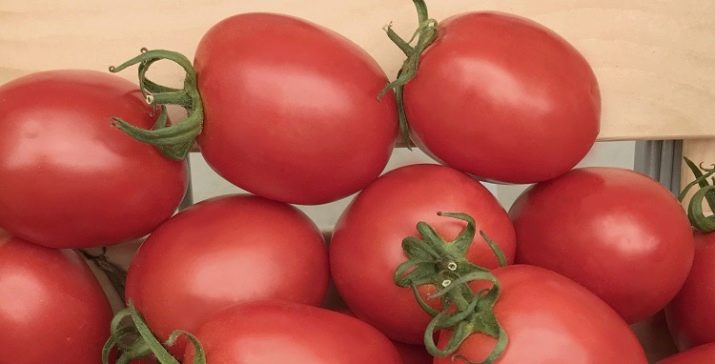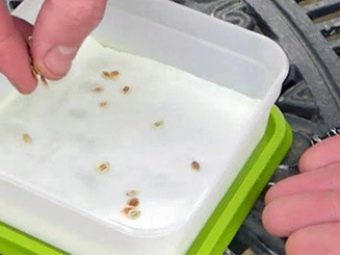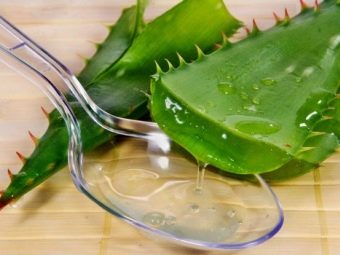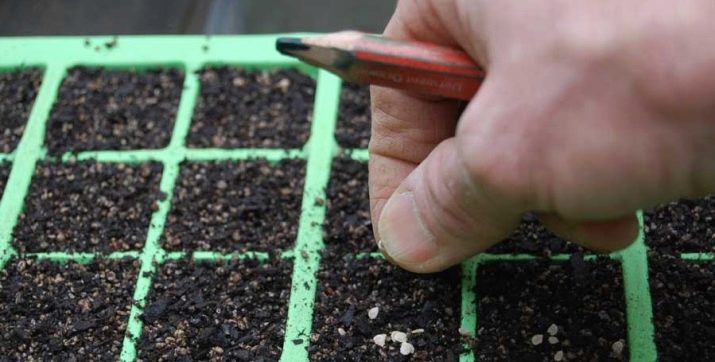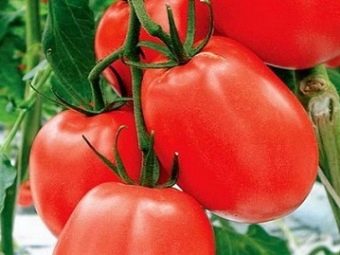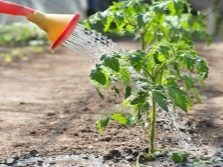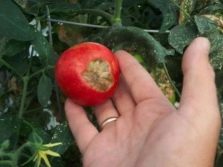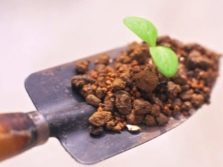Tomato "Benito F1": characteristics and description of the variety
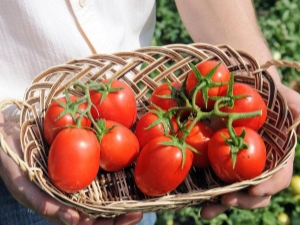
Fans of gardening and gardening all the time trying to replenish their beds with new and new varieties.If you need original and modern varieties of tomatoes, you should pay attention to the tomato “Benito F1”.
Special features
This plant can hardly be called quite a novelty. But on the other hand, it has been tested, and its impressive Dutch quality has been confirmed many times in practice. From the description of the variety, which can be found in various sources, it becomes clear that this is a hybrid with an average maturity. The above-ground part of the plant, the standard one, forms determinant bushes with a simple type of leaves. Fruits are collected in brushes of 5-7 pieces.
One bush is able to give out to the gardeners up to 8 kg of vegetables per season. Each fruit is medium in size, elongated, and near the stem you can see a rib. The mass of tomatoes is from 0.1 to 0.14 kg, they are pronounced red. Durable and relatively dense skin reliably helps avoid cracking. After ripening, the fruit gets a sweet taste and does not seem watery.
In the soft part of the tomato seed is small. The main purpose of "Benito F1" - growing in harsh and moderately harsh climatic conditions from the black earth regions to most of Siberia and the Far East inclusive. Tomatoes can quietly grow in open ground, and in a film greenhouse, and in a solid full profile greenhouse. Harvest well stored and transported without problems over long distances. Use the fruit well:
- fresh;
- in soups and hot main dishes;
- in the form of sauces and mashed potatoes;
- upon receipt of juice;
- in canned food.
Advantages and disadvantages, the use of culture
"Benito F1" gives not only tasty, but also externally beautiful harvest. Plants are well tolerated by a number of diseases, such as fusarium, verticillus, mosaic viruses. The bush is compact and does not require the creation of a support. According to most agronomists, the hybrid developed in Holland has no weak points. The optimal time for planting seeds for seedlings - from 1 to 14 March. It is possible to improve the properties of the culture by soaking seeds in growth accelerators or in fresh aloe juice.
It makes no sense to decontaminate material purchased from reputable suppliers; they take care of it themselves, and much better than the gardeners themselves.
Optimal seedling soil is light and nutritious soil, such as garden and sod land. You can improve their quality by applying peat or old humus. Containers are used for planting, simple pots, in both cases the seeds are buried by 20 mm.
After sowing, it is necessary to spray the ground with warm water and cover with foil to increase the growth rate. As soon as shoots appear, they are put on a brightly lit place. Young bushes are watered sparingly, and as soon as a pair of true leaves come out, a pick will be made in separate pots. Then the planted tomatoes need to be fed with complex fertilizer of the whole. They are transplanted to their permanent positions around May 15. The earth is loosened, the wells are prepared with fertilizing with wood ash and superphosphate.
The concentration of tomatoes per 1 square. m - a maximum of 2 or 3 pieces. Water them moderately, like other varieties, with exceptionally warm water. To yield was at the proper level, additional portions of fertilizers are introduced 2 times per month. The main type of their complex fertilization with potassium and phosphorus, according to circumstances, such mixtures alternate with organic fertilizers. Although “Benito F1” not bad transfers the main ailments of the nightshade, one cannot rely only on its own defenses.
Prevention of late blight is provided by the use of drugs based on copper. The rot is blocked at the early stage by “Phytosporin”, will increase its effect:
- regular airing of greenhouses;
- the use of mulch;
- loosening the land.
Insects are a dangerous threat to tomatoes throughout the growing season. Seedlings attract aphids and thrips. It is worth the bushes to reach full height, as they are interested in the Colorado potato beetle, a variety of slugs and medvedki. The most important measure of control is regular inspection.Aphids are removed with warm soap suds, and volatile pests are effectively suppressed by insecticides. Judging by the reviews, decoctions of yarrow, chamomile and celandine work quite well from natural products.
Additional information and recommendations
The height of the bush in tomatoes of the Dutch selection does not exceed 0.2 m. This is largely compensated by the width of the plant, sometimes reaching 50 cm. This arrangement increases the efficiency of using small gardens. A large section of the leaf and its mechanical strength make the violation of the integrity of the fetus, stem and root system the least likely event. Such characteristics of the culture allow not to fear for the safety of unripe fruits.
The variety stands out even in appearance of the stems, which are painted in light shades of green. The closest will be the Valentine variety. It should be remembered that Benito still has the characteristic problem of any hybrids: with its help, it is impossible to obtain seeds for independent reproduction. Tearing off unripe fruits is possible when they reach a height of 130-150 mm.
It is recommended that tomatoes of this variety be protected from stolbur and top rot.
Watering one bush is 2 liters of water strictly in the evenings. After each watering, the ground is loosened and at the same time it is checked whether weeds have appeared. Such checks are repeated until the final ripening of the crop. For a full landing, the ground should warm up to 20 degrees to a depth of 1.5 cm. In a greenhouse, the tomato is not too picky, but it will have to withstand a warming of air from 20 to 25 degrees, and the ground should not be colder than +20. Whether the plant is watered at some point or not is not affected.
The interval from planting to aging is 85-110 days, it is impossible to predict more accurately, because it depends on the weather. With diligence and a certain amount of luck manages to collect a couple of crops for the season. The roots are quite strong and with normal dryness of the earth will easily transfer the cooling of the earth to 10-15 degrees Celsius. Fruits most quickly reach ripeness when planting seedlings aged 20 to 30 days.
Under the influence of stolbur, the Dutchman gradually dries out and loses the ability to bear fruit. The first signs appear on the outer edges of the leaves, which become bright pink in color. Only by detecting this in time, is it sometimes possible to save the plant. Slow response causes the death of the whole tomato. The only prevention is the treatment of planting immediately after flowering with specialized mixtures.
Vertex rot (brown spots and subsequent rotting of unripe tomatoes) will not occur if you carefully monitor the condition of the land, its degree of fertilizer and moisture. It is recommended to pre-heat the soil in the oven or microwave oven. Both variants almost guaranteed exclude infection of tomatoes by pathogenic organisms. An alternative to these methods is chemical treatment, in which potassium permanganate is used.
Aging of seeds for 48 hours in warm water significantly improves germination; seedlings should be illuminated for 12 hours per day, hardening begin 14 days before planting.
In the next video, see about the main pests of tomatoes and effective ways to combat them.

